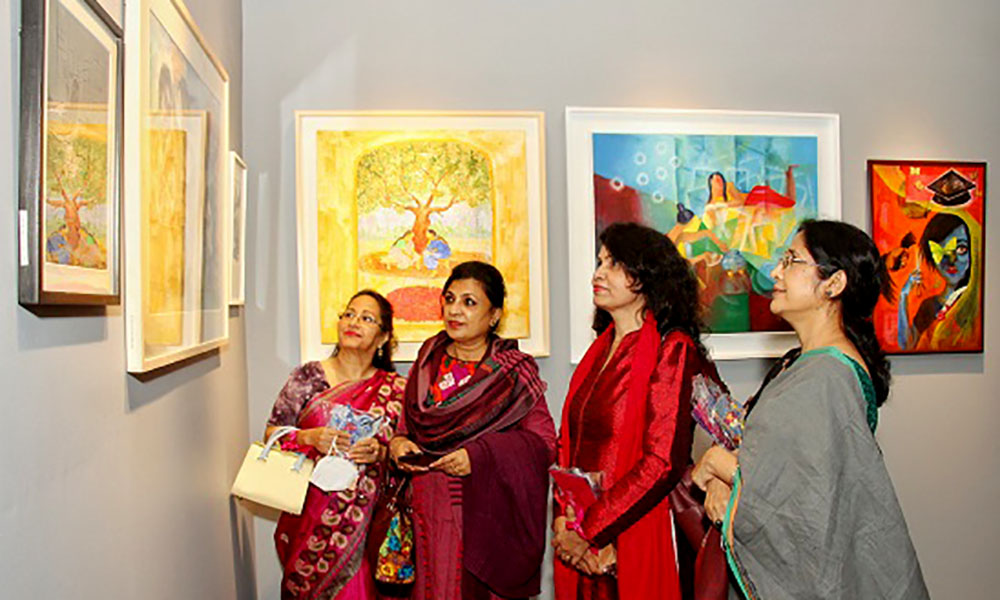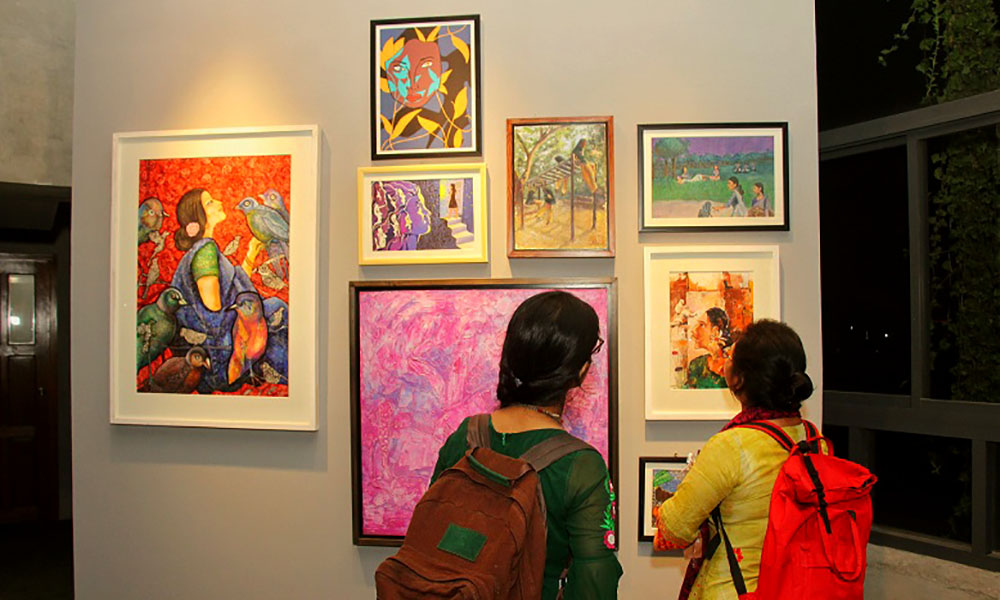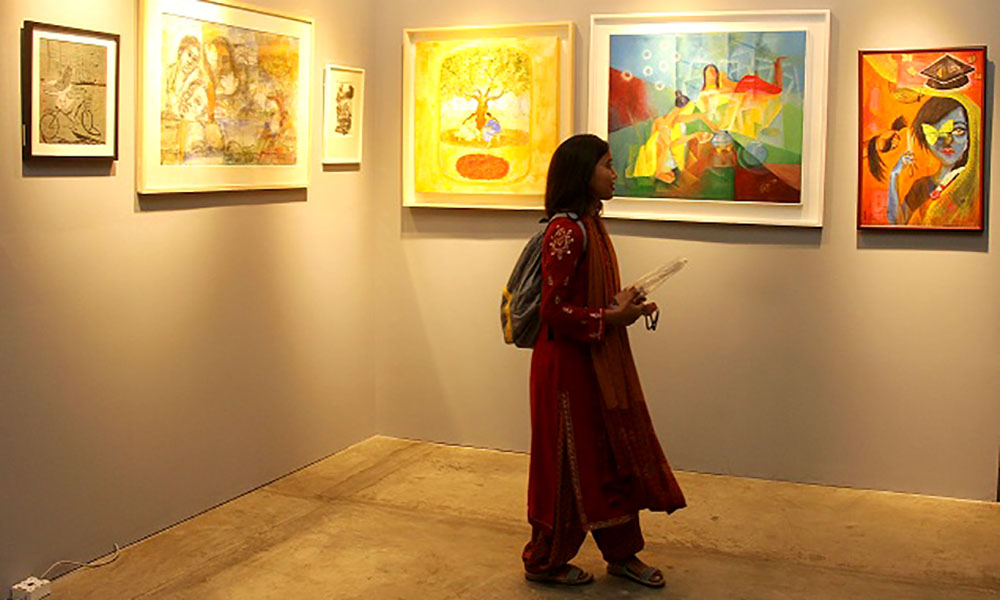In 1905, Rokeya Sakhawat Hossain wrote Sultana’s Dream, a masterfully executed story about educated women leading a society powered by scientific pursuits, empathy and intellect. Begum Rokeya spent her life advocating fiercely for girls to have the right to be educated, using her platform to spread her ‘radical’ message of empowerment and equality. It is no secret that Begum Rokeya faced criticism and opposition at every turn in her life, but she persisted and she dreamed.
Begum Rokeya’s indictment of the patriarchal society of the early 20th century could easily be a feminist review of society today. At the heart of Begum Rokeya’s work as a writer and an activist was the belief that education would birth ideas and these ideas would be the paint and brush of women’s dreams.
Inspired by Begum Rokeya’s voice and unflinching conviction, that shines through in every sentence of Sultana’s Dream, Naripokkho organized an exhibition showcasing the work of Bangladeshi female artists. Artists of 15 years and above sent in visual representations of what they view to be their dream of a feminist utopian society. Naripokkho has been working to further the women’s rights movement since 1983 and this year they began a program to open their platform to connect with more women and build a network across generations and strengthen the movement for women’s liberation in Bangladesh.
The exhibition is part of a yearlong program called “Shohoj Kothin Dwondwe Chhonde”. The program was conceived as a series of events where Bangladeshi women from different backgrounds, professional and personal, were given the space to share their struggles in managing work and patriarchal circumstances while navigating life as women. The program was conceived as a response to the alarming uptick in violence against women during the COVID-19 pandemic and in the occasion of Bangladesh’s 50 years of independence. The theme of independence was incorporated to draw parallels with the journey of Bangladeshi women’s independence over the past five decades. The Shohoj Kothin team saw this program as an opportunity to generate awareness within younger generations that Naripokkho exists as a resource for them to seek assistance and a safe space to share their experiences and that they would be adding to Naripokkho’s vast network of activists, artists, authors, researchers and other intellectuals. The overall drive for this program is to persist despite the appalling circumstances women in Bangladesh are constantly pushed into and keep the women’s rights movement growing with new voices, ideas and perspectives.
The exhibition was the culmination of the yearlong program’s efforts and a celebration of women’s creativity and unabashed expression in defiance of the constant suppression faced by women in Bangladeshi society. At the inauguration for the event, held on Begum Rokeya Day on 9th December, the youngest artist talked about her year of being locked away from school and socializing, and opportunities like these keeping the spark of creativity alive within her. Another adolescent artist who came to the capital all the way from Dinajpur to attend the inauguration talked about her definition of feminism being ‘a society where any choice a woman makes, whether to be a doctor or a mother, is respected and celebrated’. She added that there should be more opportunities like these specifically directed towards women because there are so few avenues for women to showcase their talents and unleash the power of their dreams in an explosion of colour all over the walls while completely unafraid.
The Narir Shopno exhibition will continue to run till 16 December 2021 at Drik Gallery Panthapath. Check Naripokkho’s Facebook page for further details.


